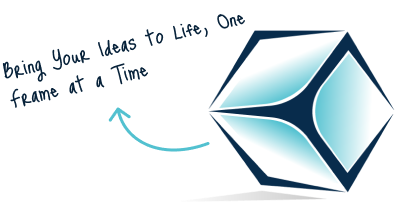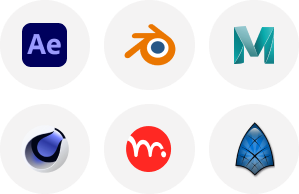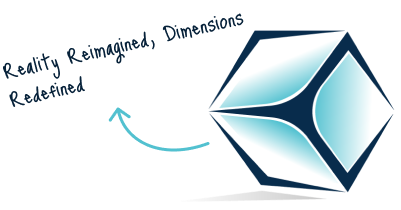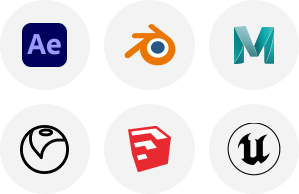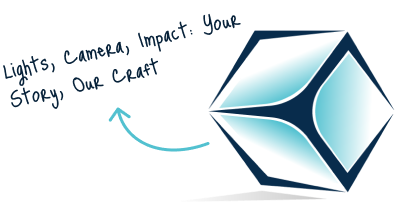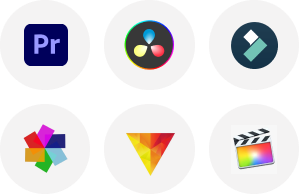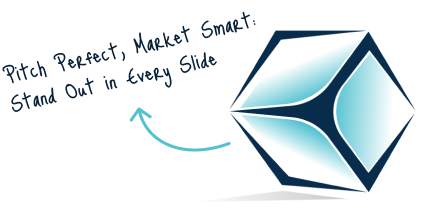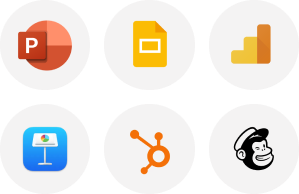Storyboards serve as a vital link between script and screen in cartoon animation, visually depicting the narrative for animators and directors. In 2D animation, they feature simple sketches illustrating timing and actions, while 3D storyboard examples include camera angles and environments. Effective storyboards encapsulate a script’s pacing and emotions, aligning the production team’s vision, as showcased in works like Toy Story and The Matrix.
Brief Overview of the Importance of Storyboarding in Animation
Storyboarding is essential for successful animation projects, providing a visual framework for production. It breaks down actions frame by frame to guide animators in the creation of smooth transitions, whether in video game animation or traditional animation styles. It ensures narrative coherence and clear communication among teams. By pre-visualizing scenes, storyboard examples help the animators to learn how to saves time, minimizes confusion, enhances consistency, and effectively translates the script into fluid, cohesive animations. This is crucial not only for animation but also for industries such as educational video production or corporate video production, where clear visuals are essential for conveying complex concepts.
In the context of corporate training videos or commercial real estate video editing, storyboarding helps determine how best to structure content for the intended audience, ensuring that educational objectives or marketing messages are effectively communicated. Whether it’s through 2D animation for engaging learning experiences or CAD and Revit integration for architectural visualizations, the process of storyboarding is foundational. With the help of a 2D animation studio or a corporate video production company, these storyboard examples become a crucial tool for achieving the desired final product.
Video editing services further refine the animation process, ensuring that each frame aligns with the overall narrative vision, whether for animation or live-action projects.
How Storyboards Serve as the Foundation for Both 2D vs 3D Animation Projects
Storyboard examples are essential for transforming scripts into visual representations, whether in 2D or 3D animation. In 3D animation services, they detail scene progression, character positioning, and frame actions, serving as a skeleton for 3D animators. In 3D production, storyboards also involve planning camera movements and environments, accounting for perspective, depth, and lighting. These visual blueprints provide clarity to the production team, ensuring consistent execution of each shot and sequence throughout the animation process. At TVS Cube – a leading 3D animation company, storyboard examples play a pivotal role in bridging the gap between creative ideas and the final 3D animated video, guiding both 3D animation services USA and traditional animation projects with precision and alignment across all stages of production.
How do you write a storyboard for a script?
It’s very simple! To learn for a storyboard examples, a script, break down the script into key scenes and visualize each one. Create sketches or images representing each shot, including camera angles, character movements, and important details. Add notes on timing, transitions, and dialogue to guide the 3D video production process. This approach is crucial for animators, especially when using 3D product animation services to showcase a product in a dynamic, realistic way.
The Role of storyboard examples| Pre-Visualizing Complex Animation Sequences
Starting with storyboard examples are very important while visualizing a more complicated animation. This makes it easy for the creative pool to figure out which moves the characters are going to make and how the cameras are going to move before animating takes place. TVS Cube – offering 2D and 3D animation services, allows exploration of timing in key actions, ensuring fluidity. For 3D animation services, storyboarding includes detailed breakdowns of camera angles and movements, aiding the understanding of scene evolution in three-dimensional space. Both mediums allow low-cost experimentation with sequences, facilitating adjustments that save time and resources while preserving the animation’s emotional and visual integrity. Animation services like these make it possible to refine and perfect every element of the animation, whether for a 3D animated video or a more traditional project.
What comes first, storyboard or script?
The script comes first. It outlines the dialogue, actions, and scenes, providing the foundation for the storyboard, which visualizes those written details into a sequence of images or sketches.
Top 5 Animation Storyboard Examples That Will Transform Your Script
When it comes to film-making, cartoon animation, and advertising, storyboard examples serves as the foundation in organizing ideas to ensure that no detail is missed. It provides visual control, helping to order the creative process. storyboard examples allows for working on angles, movements, and compositions without restricting any of the crew members, fostering a team effort to bring the creative idea to life. This process is essential whether you’re working in a 2D animation studio, creating educational video production, or producing corporate training videos. So, what is a storyboard example? Let’s explore!
Star Wars – The Opening Scene and the Power of Wide Shots
Star Wars’ iconic opening scene showcases the power of storyboard examples, are crucial for capturing the vastness of space. George Lucas’s sketches emphasized scale with wide shots, mapping camera angles and lighting to convey grandeur. These early visuals became a blueprint, transforming the script into an unforgettable cinematic experience that resonates with audiences. Storyboarding is also essential in commercial real estate video editing, where visual composition is key to conveying space and scale.
The Matrix – Storyboards for Complex Action Sequences
The Matrix exemplifies effective storyboard examples in creating intricate action sequences. From bullet-dodging to gravity-defying battles, storyboards mapped choreography and camera angles, enabling the revolutionary bullet-time effect. This meticulous planning ensured seamless integration of live-action and video game animation, maximizing visual impact before filming began. For video editing services, this pre-planning also allows editors to follow the director’s vision precisely, especially when combining live-action and animation.
The Lion King – How Storyboards Built the Emotional Heart of the Film
In The Lion King, storyboard examples significantly influenced the film’s visuals and emotional depth. They mapped key moments from Simba’s life, refining movement and tone, and established the iconic “Circle of Life” sequence. Storyboard sketches also experimented with motifs, enhancing emotional stakes and solidifying the film’s timeless impact. This same approach can be seen in corporate video production where storyboard examples outline emotional beats and important messaging, ensuring clarity and engagement with the audience.
Inception – The Visual Blueprint Behind the Dream Layers
Inception features a complex narrative with layered dreams, requiring meticulous storyboard examples for visualization. Director Christopher Nolan and his team planned iconic sequences, like the rotating hallway fight and car chase, ensuring smooth transitions between dream levels. This pre-planning helped define the dream world’s rules, enabling audiences to navigate its surreal and shifting realities. Similarly, when producing corporate training videos or using CAD and Revit to create architectural walkthroughs, storyboard examples ensures that the viewer’s experience is cohesive and clear.
Mad Max: Fury Road – Storyboards for High-Octane Animation and Minimal Dialogue
Mad Max: Fury Road exemplifies visual storytelling, using striking visuals and minimal dialogue. Storyboards, created by George Miller and Brendan McCarthy, meticulously outlined action sequences, ensuring precise execution of car chases and stunts. This detailed planning enabled a coherent narrative, blending kinetic action with practical effects to create an intense, visually captivating film. In the context of Frame By Frame Animation, careful planning ensures each individual frame contributes to the overall narrative and style of the animation, just as in action-packed sequences like those in Mad Max.

Why Storyboarding is a Game-Changer for Visualizing Your Animation Script
In the field of animation, storyboard examples plays a key role in that it converts text and direction in the scripts into images. It is a framework for the animators that explains how characters will move, how they will show emotions, how the scene will appear to look, and so on.
This way, everyone is able to create and understand the story even before it is transformed into a film, detect problems, and stick to the original idea of the work. TVS Cube – 2d animation agency excels in this process, ensuring every storyboard examples not only conveys the vision but also aligns with the creative goals from script to screen.
Bringing Words to Life: The Role of Storyboarding in the Animation Process
When it comes to animation, creating a storyboard examples serves as an important stage since it visualizes the written text and even directions anywhere in the script. It serves as a frame of reference that shows how characters will move, what expressions they will have, and how each scene will feel. TVS Cube – 3d video production is adept at transforming these written elements into dynamic visual sequences, giving the team a clear picture of the end product before starting to shoot every frame.
What is the difference between script writing and storyboard?
Script writing focuses on the narrative, dialogue, and action of a story, while a storyboard examples visually breaks down the script into a sequence of shots, helping to plan how the story will look on screen. The script is the blueprint, and the storyboard is the visual guide for production. TVS Cube – 3D Animation Production Company uses this visual guide to help streamline the production process, ensuring that the transition from script to screen is both efficient and creative.
The Visual Blueprint: How Storyboards Ensure Consistency and Clarity in Animation
Consistency is vital in animation for a polished final product. Storyboards serve as visual blueprints, detailing action and key elements like composition and color to guide animators. They prevent unexpected shifts in visuals, ensure team alignment, and facilitate early adjustments, saving time and resources. At TVS Cube – 3d product animation video company, storyboarding plays an essential role in keeping the vision consistent across every frame, making sure the final animation matches the original concept.
Essence of Establishing Visual Continuity Across Scenes
In animation, maintaining mood and style is crucial, making storyboarding essential. It provides a visual roadmap that ensures continuity between scenes, regardless of their nature or style changes. By planning character designs, backgrounds, and color palettes, storyboards facilitate smooth transitions and keep the audience engaged, preserving the story’s visual identity throughout. TVS Cube – 3D animation company specializes in this kind of detailed visual continuity, ensuring that the final product remains cohesive and true to the vision from start to finish.
Common Animation Storyboarding Mistakes and How to Avoid Them
| Mistake | Description | How to Avoid It | TVS Cube – Approach |
| Over-complicating Your Storyboard | Storyboards that are too detailed and cluttered, obscuring the main message. | Focus on essential elements like key actions, transitions, and key moments. Simplify to maintain clarity. | Emphasize minimalism and clarity, ensuring each frame serves a clear purpose in the narrative. |
| Ignoring the Script’s Emotional Tone | Failing to capture the emotional undertones of the script in the storyboard, which can weaken the storytelling. | Incorporate the emotional tone in each frame, highlighting how it should feel for the audience. | Ensure the emotional tone is woven into every frame to create a deeper connection with the audience. |
| Forgetting to Communicate with Your Team | Not sharing early drafts and feedback, which can lead to misalignment in vision, tone, and style. | Regularly share drafts with the team and encourage feedback to stay aligned. | Promote a culture of open communication to align vision, tone, and style from the start. |
The End Note:
Turning your script into animation hinges on effective storyboards. They visualize the script, showcasing action, dialogue, emotional tone, visual style, and pacing. A strong storyboard captures key character expressions, camera angles, lighting, and staging, aligning the team with the story’s essence. Ranging from rough sketches to detailed illustrations, the best storyboards serve as clear guides, anticipating challenges and ensuring narrative consistency throughout production.
FAQ’s:
What tools or software can I use to create storyboards for 3D and animation projects?
There are various digital storyboard creation tools including Storyboard Pro, which has gained prominence in the animation sector, as well as Toon Boom aimed at 2D/3D combination projects. For 3D animations some of the teams leverage tools like Blender or Maya in order to create 3D scenes, while others rely on Photoshop or Storyboard examples That for basic 2D drawings which illustrate the main events.
Can storyboards be useful for virtual reality (VR) or interactive animations?
Yes! Storyboards are extremely helpful for VR and interactive animations, where the user’s perspective can change constantly. These storyboards not only plan the visual flow of the experience but also map out user interactions, camera transitions, and how the environment will react to the viewer’s movements or choices. This helps creators ensure a smooth and engaging experience from start to finish.
What are examples of animation storyboards?
Examples of animation storyboards are visual representations of scenes or sequences in an animated project. These storyboards show how characters, backgrounds, and actions evolve frame-by-frame, often with rough sketches or detailed illustrations. They help animators plan the flow of animation, camera angles, and key scenes.
Why are examples of storyboards for websites useful in web design?
Examples of storyboards for websites help designers plan and visualize the user experience (UX). They show how different pages and features will be laid out and how users will interact with them. This helps identify potential usability issues and ensures smooth navigation across the site.
How are UX storyboard examples used in design?
UX storyboard examples are used to visualize the user’s experience and identify potential pain points. Designers create these storyboards to ensure that the product’s interface is easy to use and that the overall experience meets the needs and expectations of the target audience.









